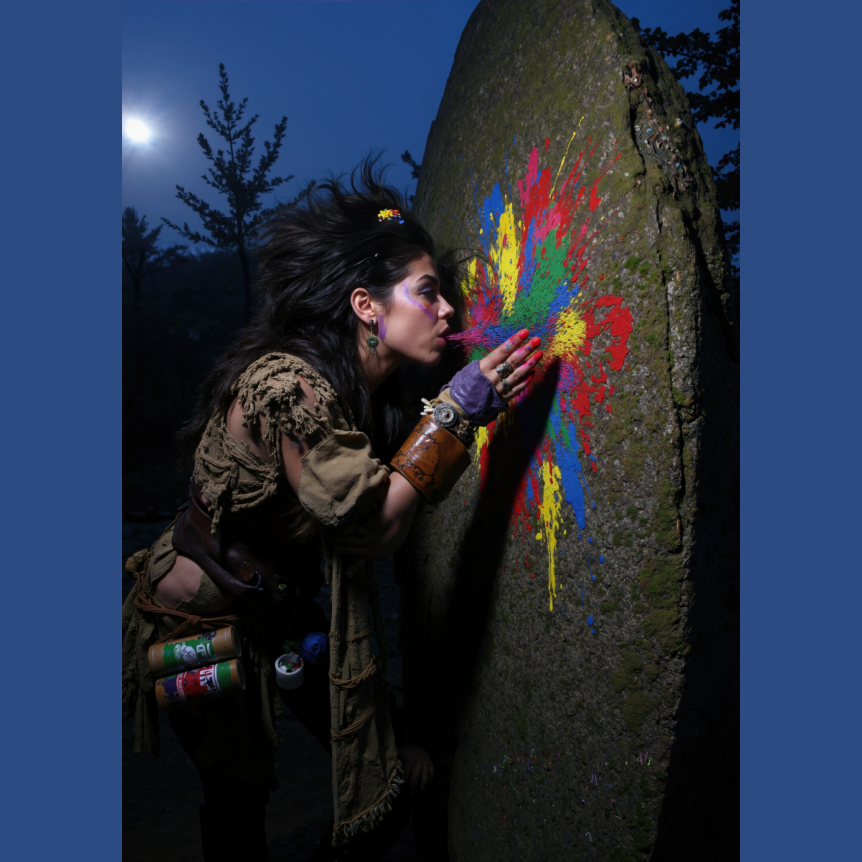Early rune carvers doubled as storytellers, creating visual narratives using resources accessible to the entire settlement. Applying ground minerals and fruit pigments, they propelled these mixtures onto stone surfaces and walls, producing hazy contours and intricate details that captured diverse perspectives rather than authoritative narratives. Similar to spiritual intermediaries, these creative individuals operated beyond conventional boundaries, preserving varied experiences and viewpoints for all to witness. The Lee-stone returns to Rundetårn after vanishing in Copenhagen’s Great Fire of 1728. “The Good, the Lost, and the Beautiful (Det gode, det tabte og det skønne)” is a counterfactual project by @kristofferorum building on the lost Lee runestone using AI. This 1.5-metre reconstruction stands alongside AI-generated Viking postcards that blur the lines between historical memory and digital manipulation. Part of “De Tabte Runesten” - nine contemporary artists bringing lost cultural monuments back to life. 20.06-24.08.2025 | Rundetårns Bibliotekssal Tower Talk: Friday 20.06 Runestone Workshop: Saturday 21.06 Artists: @frida.retz @ccbrogaard @geobit @louisandrejrgensen @idakvetny @kristofferorum @sidsel_bonde_ @luxusmusklen @louise_vind_nielsen Supported by Ny Carlsbergfondet, Knud Højgaards Fond, 15. Juni Fonden, A.P. Møller Fonden, Lizzie & Mogens Staal Fonden, Københavns Kommune Thanks to Hannah Keegan More at Rundetaarn.dk @theroundtower #thelostrunestonens #rundetårn #contemporaryart #aiart #kulturarv #copenhagen #kunstudstilling #digitalart #kristofferorum #danishheritage #rundtaarn #detabterunesten #vikinghistory #culturalhistory #danishculture #firhedlighedoghiphop
